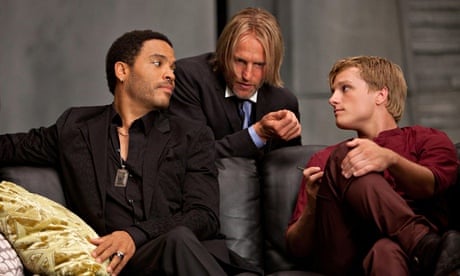Earlier this month I spoke at the Manchester Children's Book Festival on diversity in publishing. The conversation was both fascinating and frustrating, and in the week where Malorie Blackman bemoaned the lack of representation at the Carnegie award ceremony, it's clear how important these conversations are.
One of the main discussions centered on how often "diverse" books are issues-driven: arranged marriage, acid attacks, terrorism are the territory of black and minority ethnic (BME) writers, as if their stories are somehow only relevant if defined by their cultural or societal differences. Yet, as a writer of mixed descent (half-Chinese, half-white) who was a voracious reader as a child, I never saw myself in the kind of books that I devoured: fantasy and science fiction, adventure and romance.
In worlds where elves, dwarves and all manner of magical creatures lived side-by-side with humans, rarely were those humans anything other than white. It seemed like readers would rather accept talking dragons than a mixed-race princess. Similarly in science-fiction, there were futures where robots ruled, but not where people of different colours and backgrounds existed. Any exceptions – like Ursula LeGuin's Wizard of Earthsea – became much treasured reads.
The only solution left for me was to write one. My fantasy novels, inspired by medieval Mongolia, are set in a non-Western world and don't feature a single white character. There's no one around to expound on how 'exotic' the setting is, and no savior with blue-green eyes coming to the rescue. I worked with my publisher to make sure that the characters on the cover of the book accurately represented the characters within, so I could have one of the few covers in children's fantasy with Asian characters on the front.
To make sure children see themselves represented in literature, we need to put books by diverse authors, featuring diverse characters, in their hands. There are diverse authors out there, like my fellow panelists Sufiya Ahmed, Tariq Mehmood and Jacqueline Roy, writing about diverse characters – they just don't get nearly the attention they deserve. Publishers need to make more of the diverse voices they have on their lists already.
But it doesn't just end with publishers. Retailers need to display them on their front tables. Librarians and teachers need to recommend them. And parents need to buy them. To reverse the trend, we need to celebrate the authors that are already blazing that trail. We need to be armed with the best possible opportunities – because trailblazing is never as easy as riding a wave.
Children from all backgrounds need literary heroes of all races and nationalities. They need characters that represent them and their friends on book covers. They need to see themselves not just in the frame of issues – but in adventures and romances, in dystopias, science fiction and in fantasy. One day, I hope we see bookshelves that represent the rich and diverse world we live in. It may just be a fantasy – but I sincerely hope not.
Look out for the Guardian children's books themed week on diversity starting October 13 2014 where we will be discussing these issues in lots of glorious detail.
Your suggestions
Maya
There are so many great books out there that challenge stereotypes. I love the Nina books by Madhvi Ramani (there are only 2 of them unfortunately), which do a great job in this respect. Not only is the main character an adventurous Indian girl, but her Indian aunty who wears saris and likes cooking is also a government agent, who has a magical travelling shed in her back garden. In the books Nina goes to India and to China and learns about different cultures. I particularly liked the China one, called Nina and the Kung Fu Adventure, where Nina becomes a kung fu expert!
